Thomas Neyhart
Posigen CEO
Thomas Neyhart founded PosiGen in 2011. The company focuses on providing green energy to low-to-moderate income households to make a positive financial impact on people’s lives. Since its inception, Thomas Neyhart’s PosiGen has assisted more than 10,000 families in Connecticut, Florida, Louisiana, and New York saves money with its unique solar energy and energy efficiency products and services.
Thomas Neyhart studied at Louisiana State University. From 1991 to 2002, he was the owner of Colortyme, a rent-to-own retail business. In 2004, he became president of TNL Enterprises, Inc., a position he holds today. He is a past president of the Louisiana Rental Dealers Association
During his time as CEO of PosiGen, Thomas Neyhart has raised $125 million in equity, $275 million in tax equity, and established credit lines valued at more than $150 million. The Office of the U.S. Secretary of Defense has presented the company with its Patriotic Employer Award and the U.S. Chamber of Commerce has presented PosiGen with its Blue Ribbon Award. PosiGen has been named to the Inc. magazine 5000 Fastest-Growing Private Companies list for three consecutive years.
Thomas Neyhart serves on the Board of Directors of the Energy Diversity and Inclusion Council, which focuses on bringing an inclusive culture to the energy industry. A frequently invited speaker about renewable energy and construction, Thomas Neyhart is a sustaining member of the Society of American Military Engineers, a contributing member of the National Renewable Energy Laboratory’s Solar Futures Study Technical Review Panel, and a member of the New Orleans’ Office of Economic Development’s energy sector team. He was named by Goldman Sachs as one of the 100 Most Intriguing Entrepreneurs in 2014.
 medium.com/@thomas.neyhart.posigen?source=rss-8a4b2e906dfa------2
medium.com/@thomas.neyhart.posigen?source=rss-8a4b2e906dfa------2
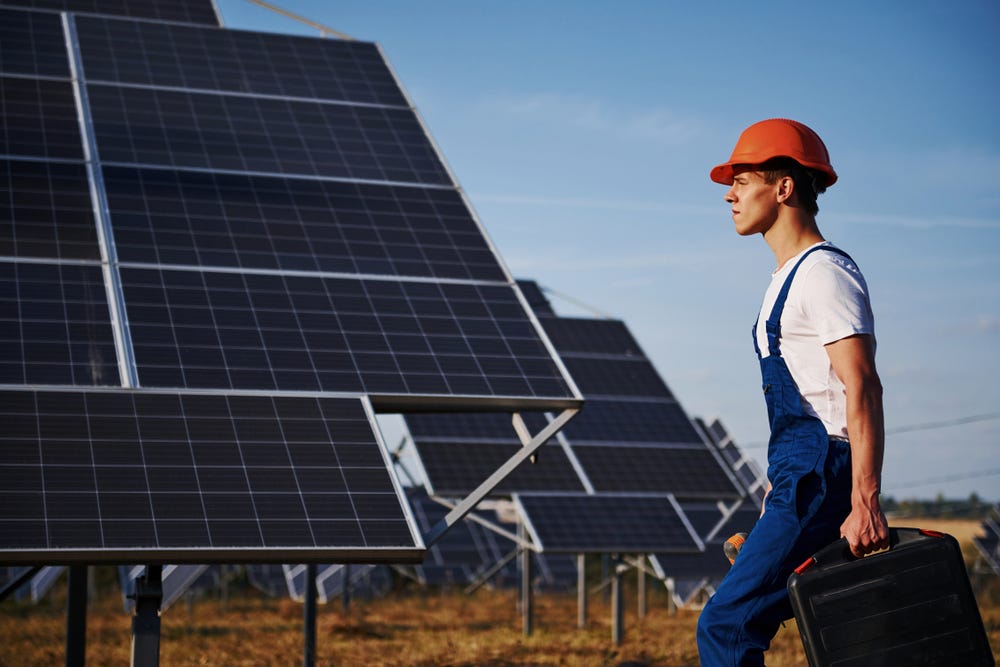
Going solar is a great way to save the environment, cut costs on utility bills and minimize reliance on the electric grid. But residences and businesses face obstacles in efforts to go solar.
For one, solar systems are costly. Another setback is a lengthy permitting process that many businesses and homeowners must deal with before their systems are approved.
Fortunately, the Department of Energy (DOE) recently introduced aSolar Automated Permit Processing Toolthat allows governments to expedite solar permit approval while cutting costs. Read on to find out what’s involved in the permit process and how the new program can help us get to our energy saving goals.
What is Involved in the Solar Panel Permitting Process?
Solar panel installation requires electrical and construction work, and you are going to need permits before you proceed. Permits can be attained through your local government. You may need an electrical permit, a structural or building permit and, possibly a permit specifically for the panels.
It is not uncommon for the city to require plans to be submitted along with the permit. These may need to be provided by a contractor or engineer.
Other permit requirements may be involved, and these can vary from state to state and even from town to town. They will depend on your zoning laws, yourcodes and your local legislation. For example, some fire departments will require a specific clearance area around your installation to provide easy access event of a fire.
If you live in a condo or townhouse, you may need approval from the homeowner’s association (HOA) before moving forward. If you live in a historical community, you may need to get an okay from your local historical commission.
Permitting requirements will also vary depending on the type and size of the panels being installed. A large commercial solar panel system will require more permits than a smaller residential system. Larger systems will also require more paperwork and a longer approval process.
The permits you need to get will differ depending on whether your panels will be installed on the rooftop or in the ground. A ground mounted system may require a land use review, but you will not need to deal with structural and building permits that are necessary for rooftop systems.
Solar permits will also cost money. Fortunately, they are usually not more than a few hundred dollars. Many states put caps on solar permit charges so they will be affordable for residents. For example, Colorado caps solar permit fees at $500 for residential and $1000 for commercial. California limits residential solar permits to $450.
Permits and inspections are typically handled by the installation company and fees are included in the bill. With solar costing thousands of dollars, the few hundred added on may barely be noticeable.
The DOE’s Solar Automated Permit Processing Tool
While the cost of permits typically aren’t much of an issue, the approval process can be time consuming. Fortunately, the Department of Energy is doing its part to limit processing times with its The DOE’s Solar Automated Permit Processing Tool (SolarAPP+).
TheSolarAPP+ gives local governments the ability to review and approve permits quickly. This helps businesses and residences get their solar installations sooner and it will be instrumental in aiding the country in reaching the Biden-Harris administration’s solar energy goals.
Solar permitting processes vary around the country and solar installers tend to avoid working in areas where wait time for approval is longer. The Solar APP+ tool instantly approves permits that meet the right specifications regardless of the area you are in making solar more accessible throughout America.
The SolarAPP+ tool was originally introduced in four communities in California and Arizona last year. Since then, permitting review times in those areas have gone from an average of 20 days to zero.
The tool works by automatically conducting code compliance checks and generating an inspection checklist for installers and inspectors to use to confirm compliance when they are out in the field. Its compliance reviews are based on the international model costs that nearly half of America’s permitting authorities use.
In addition to launching the SolarAPP+ tool, the DOE also introduced the Summer of Solar campaign in July of 2021. It aims to educate the public about solar energy, and it supports the organization’s mission of getting 125 local governments to sign up to learn more about Solar APP+.
Conclusion
Permitting has been an obstacle in getting America to reach its solar energy goals. The DOE’s SolarAPP+ tools help to cut out on approval times so people can go solar quickly and with fewer hassles. How will it affect your decision to move to solar?
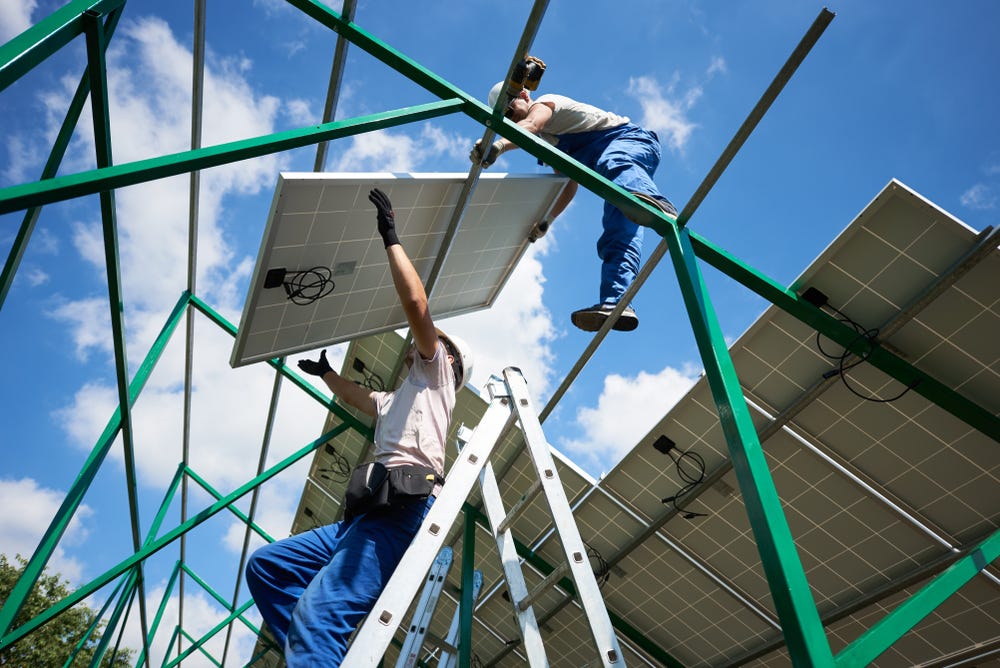
There is a growing concern that the development of solar farms is a threat to agricultural land. Some feel developers are taking land used to grow crops for panel installation reducing farmers’ ability to thrive and produce.
But current research shows that animals, vegetationand solar panels can live together in harmony and may even have mutually beneficial results. This article will look at how bees, sheep, crops and solar panels can help one another get by.
Sheep
Sheep are beneficial in a solar setting because they graze on land. This keeps plants from shading panels and allows them to collect maximum sunlight.
In fact, sheep are so helpful in the solar collection process that farmers are being paid $300 to $550 per acre per year to have their sheep graze at solar sites. Developers say this is less expensive than traditional site maintenance.
Light grazing has also been shown to produce wildflowers that attract bees and pollination which is also beneficial to the solar process. They are feeding at solar installations in more than 20 states as well as countries in Uruguay, Australia, the United Kingdom and other parts of Europe.
Vegetables
One may think that the installation of solar panels deprives vegetables of land to grow on. But vegetables can grow under solar panels and have even been shown to thrive in these locations.
Researchers conducted a study to compare vegetables grown under panels raised six to eight feet above the ground against those grown in open sunlight. Results showed that shaded plants had a longer growing period overall. The technique especially beneficial in hot, arid climates.
Growing under solar panels also maintains agricultural jobs as workers are needed to tend shaded vegetation ensuring weeds are eliminated and plants get the water and nutrients they need.
Renting land to developers could also generate income for small farms that are breaking even or losing money. They can lease their land while continuing to grow food and generate profits.
Pollinators
Many pollinators are facing extinction, but solar farms provide a habitat for them to thrive.
According to research, solar grounds are ideal for the type of flowers and plants that attract pollinators. Bees and other insects were said to visit plants partially or totally shaded by panels allowing them to pollinate nearby crops and boost yields.
Furthermore, solar sites with pollinator friendly vegetation may increase habitat quality for pollinators three-fold. They would provide two thirds more carbon storage potential, a close to one fifth reduction in water runoff and a 95% decrease in soil erosion as compared to land that’s been traditionally cultivated.
While some developers are holding off on using pollinator friendly vegetation because it is more expensive than the lawns used at most sites, it is predicted that expenses will be offset by lower maintenance in the future.
Other Ways Solar Helps Animals Thrive
The development of solar farms may have seemed like a threat to agricultural land, but new developments and research show how both communities can thrive. Here are some other ways solar benefits wildlife.
Sea Life: Many solar panels are installed on top of waterways. The reflection of the water helps attract the sun while the panels shade the water reducing evaporation rates. This preserves water systems that sea life needs to live and thrive.
Birds: Burning electricity causes carbon pollution to get into the environment. While this is not good for any animals, it is especially harmful to birds the fly at high altitudes where greenhouse gas blankets form. As a result, birds are flying farther north and causing a disruption to the ecosystem. Solar panels use natural energy that doesn’t harm the environment or produce carbon emissions keeping birds and other animals safe and healthy.
Silflower: A relative of the sunflower, silflower once blanketed the North American prairie. Now it is mostly seen only at roadsides and in ditches. However, it may be making a comeback due to solar energy. As an oilseed crop, it contributes to renewable energy production and helps stabilize greenhouse gases. It is also great for attracting pollinators.
Conclusion
Environmentalists may have been concerned about solar farms’ potential negative effects on agricultural land. But current research and developments show that they can benefit each other making for a thriving ecosystem and a greener way of conducting energy. It is fortunate that the two can live side by side and make the world a more eco-friendly place.
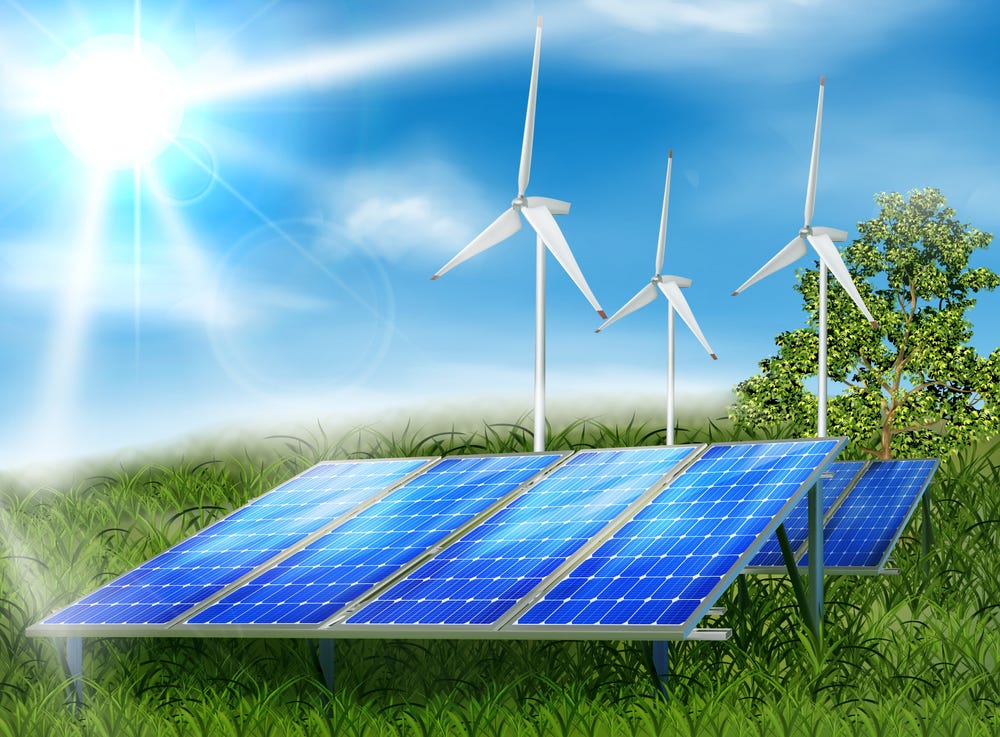
President Biden has made his stance on clean energy clear. He has introduced aggressive legislation that will help the country achieve a net zero emission building portfolio by 2045 and zero emissions for federal operations by 2050. But to reach for the country to reach these goals, he will need the help of the states and their governments.
This article will look at the states’ progress so you can see how they measure up.
Five U.S. States That Adopted New Clean Energy Standards in 2021
According to the U.S. Energy Administration, 31 states and the District of Columbia had implemented renewable portfolio standards (RPS) or clean energy standards (CES) by the end of 2021.
These included four states that updated their RPS or CES policies, those being Delaware, Illinois, North Carolina and Oregon, and Nebraska, which approved its first clean energy goal in December of 2021. Nebraska became the 20th state to commit to a 100% clean energy goal by 2050.
States have varying definitions regarding what their RPS and CES policies entail. While many integrate terms like carbon free, carbon neutral, clean and renewable, others include nuclear energy and natural gas that uses carbon sequestration technology in their plans. While these types of energy may provide an improvement, they are not generally considered to be renewable.
So what measures did the states take in moving forward towards their clean energy goals? Here are your answers.
Delaware: Delaware’s governor signed a bill raising the state’s RPS to 40% by 2035. This is up from a previous target of 28%.
Oregon: Oregon increased its CES to achieving a 100% clean energy share of sales by 2040. This will require retail electricity providers to reduce CO2 levels by 80% from 2005 levels by 2030 and 90% by 2035 to reach the 2040 goal.
Illinois: Illinois increased its RPS goals to account for 50% of electricity sales from renewables by 2040. This replaced their past goal of reaching 25% by 2026.
North Carolina: North Carolina increased its CES goals to account for 100% of electricity sales generated from carbon neutral sources by 2050. This took place of its previous goal which accounted for 12.5% of sales from renewable energy by 2021. The new plan includes a smaller target of reducing 2005 carbon emission levels generated by facilities and utility companies by 70% by 2030.
Nebraska: The Nebraska Power District which oversees the state’s electricity generation approved a goal to achieve 100% carbon free electricity generation by 2050. Nebraska generated 41% of its electricity from carbon free sources in 2020 which was seen as a starting point for the state.
How are the Other States Doing?
These five states have upped the ante in the past year. Here are some that rank among the highest producers of renewable energy in the country.
Alaska: Alaska has been knocking it out of the park in terms of renewable energy. The state currently generates 30.8% of its electricity from renewables yielding an increase of 8.3% in the past five years. Their total electricity generated from renewables stands at 1,931,545 MWh and their largest renewable energy source is hydroelectric conventional
Colorado: Colorado’s fresh air image isn’t just for show. The Rocky Mountain State generates 30.9% of their electricity from renewable energy showing a whopping increase of 77.4% in the past year. Their total electricity generated from renewables is 16,725,964 MWh and they credit wind as their most used renewable energy source.
California: Cali is known for being a green state. So how is it doing in terms of clean energy? It is currently generating 42.6% of its power from renewables. It has seen a 38.9% increase in renewable energy production over the last five years. Its total energy generated from renewables is 82,239,832. It credits solar thermal and photovoltaic as its largest sources of clean energy.
South Dakota: South Dakota, we take our hats off to you. The state is currently producing 80.5% of its electricity from renewables making for a 55% increase in the last five years. The total energy it’s generating from clean sources equals 11,338,456 MWh and hydroelectric conventional is its biggest renewable energy source.
Vermont: All the states in this article have been doing a great job, but Vermont takes the cake. With 99.9% of its electricity generated from renewable sources, it is currently the cleanest nation in the state. It has seen a 9% increase in renewable energy production in the last five years. Its total electricity generated from renewables stands at 2,155,177 and its largest renewable energy source is hydroelectric conventional.
Conclusion
Let’s give a round of applause to all the states who have done a bang-up job in increasing their clean energy goals and use in 2021. Here’s hoping that 2022 will be even better.

Solar is a great way to provide power to a home. But it has its share of drawbacks.
One of the main disadvantages is that solar isn’t always there when we need it. It doesn’t continue working through the night when the sun isn’t there to power it. And, like other types of power, it can go out in emergencies.
But you can get past these disadvantages by creating an uninterrupted power supply (UPS). This article will review UPS options and what they entail.
Benefits of Uninterrupted Power Supply with Solar
The idea of using back up during a power outage is nothing new. Many people have generators or other types of emergency power devices to get them through.
But unlike these devices, the options for solar are uninterrupted providing a seamless transition. So, people with a UPS for solar often don’t even know an outage has occurred until they check the news or talk to neighbors. This is especially beneficial as there are no interruptions in technology and nothing has to be done to activate back up systems.
They can also bring people closer to going 100% solar reducing their energy bills and carbon footprints.
What are the Types of Uninterrupted Power Supply?
Uninterrupted Power Supply is available in a variety of forms. Here are some to consider adding to your solar system.
Batteries
Solar systems can produce an excess of energy. If you don’t have a battery, the excess energy will go back to the grid. If you are enrolled in a net metering program, you will receive a credit for the energy you sent back to the grid, but the credit you receive typically will not cover the full amount you are providing.
If you have a battery, the extra energy will get stored in the battery so you can use it during times of low and no generation. It will automatically switch on after the sun goes down or during a power outage to provide continual service.
Supercapacitors
While batteries are a good option for UPS, they are not ideal. They usually last 3–5 years, but PV cell production is unpredictable causing output fluctuations which interrupt the battery charging process. They can cause high surge currents which reduce the battery’s lifespan.
Supercapacitors can be used alongside a battery to prolong lifespan and increase the system’s energy density. They act as a buffer when used alongside the battery and protect it from high power drains. They have unlimited life cycles, high power density, they charge quickly, and they have a lower series resistance. A hybrid system has replaced batteries alone in many applications.
Flywheels
A flywheel system consists of a cylinder that spins rapidly, or it can come in the form of a vacuum sealed container that stores electrical energy. It stores electricity by converting it to kinetic energy. When energy is available to store, the flywheel will be driven to accelerate. It then turns in the other direction to act as a brake and discharge the energy.
Flywheels are currently being tested for use in residential PV systems. Researchers are working on driving down the prices to make them more accessible. If successful, the product will be available offering 30 years of backup storage although inverters may have to be changed out after 15 years.
Drawbacks of Using a UPS with Solar
A UPS system is typically a great option for solar as it provides uninterrupted power and less reliance on electricity. However, it comes with its share of drawbacks. Here are some to consider.
Cost
Solar systems can be expensive as it is. They will be even more expensive if combined with a backup power option. However, the long-term benefits may be worth the investment.
Wiring and Installation
The wiring and installation of the system with UPS is more complicated as compared to traditional solar panels. This can cause issues if installation is performed by someone who is not familiar with these types of systems. It will also further drive-up costs.
Net Metering Issues
If you are in an area that offers a net metering program, it may not worth it for you to have a UPS system installed.
Conclusion
A UPS solar system is ideal in a world that relies heavily on power generation. It is also beneficial to those hoping to go 100% solar. Will you be adding back up devices when you have your panels installed?
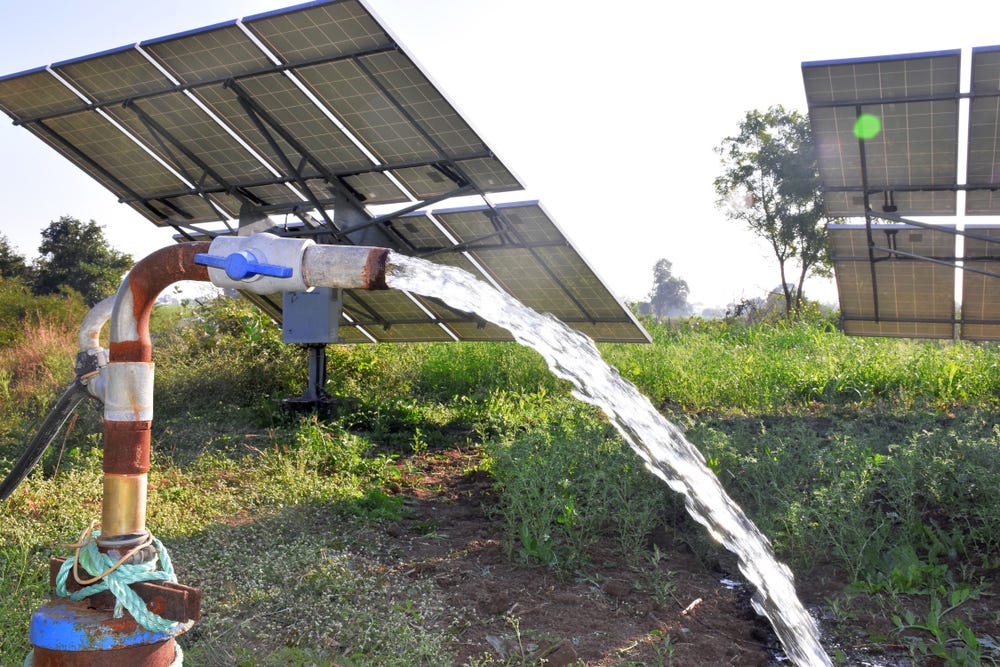
Have you ever heard of liquid solar energy? It’s not an entirely new development, but its not talked about as much as say, the solar we used to power our homes. This article will discuss liquid solar, its origins and how its used.
Liquid Solar Origins
Liquid solar was created in 2019 by a group of Swedish scientists. It comes in the form of norbornadiene, a liquid sunshine that can capture up to 30% of solar power. This compares to the best solar panels which can only harness 21% of solar power. Therefore, it can generate about 50% more power making a big difference in energy efficiency.
What’s more, norbornadiene can maintain its potency for 18 years of more. It allows power to be generated now to be used by future generations as fossil and nuclear fuel alternatives.
Liquid Solar Testing
After liquid solar was created, it was put to the test on the roof at Chalmers University of Technology. Scientists found that once it was activated, it could be heated to just below the boiling point making it useful in generating power in most applications.
It was also found that its activation requires potentially toxic solvents like those that are cobalt based, to transform it into its active form of quadricyclane. Scientists have also had to mix their isomer with a flammable toluene. Researchers are working on finding less dangerous catalysts and have since come up with a way to use the isomer without dangerous additives.
The substance is reactivated when exposed to sunlight. It has an energy density of 250-watt hours per kilogram making it twice as strong as Tesla’s Powerall battery.
Concerns
In addition to the potential toxicity of liquid solar, there are other concerns that are being considered. For example, are drivers ready to use it to power their cars? It may be stable in a hermitically sealed container but bringing it to everyday use requires additional security.
The half life of norbornadiene is another uncertainty Although scientists are estimating that it can hold power over 18 years, they are unsure of how it will evolve over time.
However, even if the substance loses some of its strength, it is a natural resource that’s predicted to withstand the test of time. It could be a short-term solution to replacing fossil and nuclear fuel working to lower the carbon emissions created by vehicles. It may also come in handy in the powering of aircrafts and homes.
The MOST System
The MOST system is one of the newer developments created using liquid solar. It involves the liquid running through a concave solar thermal collector that has a pipe installed through its center. The collector allows sunlight to focus on the pipe and the fuel that runs through it causing norbornadiene to transform into its activated form of quadricyclane.
The charged fuel then runs through the transparent tube into storage tanks that can store the energy or be used to ship it to other locations. It is predicted to stay good in the tanks for 18 years.
The fuel is released when it’s passed through a catalyst which is the site of a chemical reaction that converts the fuel back to a liquid that’s temperature has been boosted by 63 degrees Celsius or 145 degrees Fahrenheit. So, if the fuel goes into the catalyst at 20 degrees Celsius, it will come out at 83 degrees Celsius.
Once the liquid has completed the reaction, it can be used for heating a home or business. It can be utilizedto run clothes dryers, water heaters, dish washers and other large appliances. It can also come in handy in industrial applications.
In recent years, there has been a huge focus on coming up with ways to store solar that are as clean as the energy itself. While batteries have been a good solution, it’s difficult to produce power cells without toxic materials. The MOST system may be an exciting new development in energy storage.
Conclusion
For now, solar liquid is still in development, but scientists are hoping that norbornadieneproducts will be available to the public in the next couple of years. Once they become widely available, scientists feel theywill be effective in reversing climate change while yielding a reduced need for energy consumption related to heating and cooling. It is hopeful that it lives up to its potential in making solar more available in the future.
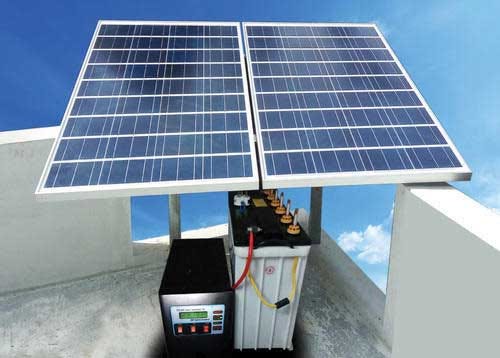
Solar panels aren’t the only components of your home’s solar system. Solar inverters play a huge role as well.
Solar inverters convert solar energy into power so it can be used by appliances, lighting, electronics and more. There are a variety available and the kind you get can make a difference in how your home accesses solar.
This article will review the various types of solar inverters so you can determine which type is best suited to your needs.
How Does a Solar Inverter Work?
When the sun shines on to your panels, it causes electrons that carry solar cells to move around. This produces direct current (DC) energy. The circuits within the cells collect the energy which is used to power your home.
However, most homes use alternating current (AC) energy, not DC energy. To make it suitable, the energy is sent to the inverter which converts it into AC energy so it can power your devices and appliances.
What are the Different Types of Solar inverters?
There are three different types of inverters you can use on your home. These are as follows:
String Inverters
Also known as standard central inverters, string inverters are commonly used by smaller systems. When a string inverter is used, every panel of the system will be wired together into a string, usually a string of three.
The strings are connected to the central inverter so they can send energy there when it’s produced. The central converter will convert your DC energy into AC energy so it’s ready to use.
String inverters are typically located on the side of your home, or in the garage or basement.
These inverters come with their share of pros and cons. Here are some to consider.
Pros: String inverters are low cost and durable. They are also easy to maintain because they tend to be located in an accessible part of the home.
Cons: If one panel in the string malfunctions, it could cause the inverter not to function properly. This means it is not the best option for complex systems with a lot of panels.
Microinverters
Whereas a string inverter may be thought of as a central inverter, a microinverter can be considered a distributed inverter. With this system, inverters are installed in each panel and convert the energy from AC to DC right on the roof.
Pros: Because microinverters are located in each panel, they are ideal for systems with more complex designs. They also optimize the output of each panel to counter the effects of shading making them ideal for systems installed in heavily shaded areas.
Cons: Microinverters are expensive, and because they are located inside panels on top of the roof, they are difficult to maintain and repair.
Power Optimizers
Power optimizers are a cross between string inverters and microinverters. Like microinverters, they are located next to or inside of individual panels on the roof. But they also send power to a central inverter.
These optimizers don’t convert DC electricity to AC electricity at the site of the panel. Instead, they fix the voltage of the electricity which conditions it before sending it down to a string inverter. The system uses both an optimizer and a string inverter making it a powerful choice.
Pros: Because power optimizers are so powerful, they are recommended for shaded and complicated systems. They boost the efficiency of the system by allowing each panel to mitigate shading issues while providing owners with the ability to monitor each panel’s performance. They are also lower cost than microinverters.
Cons: Although power optimizers are less expensive than microinverters, they are more expensive than string inverters. Also, because they are stored on the roof, they are harder to maintain.
Which is Best for My Home?
With a few options to choose from, you may wonder which inverter is best for you home.
A string inverter is best if you have a relatively uncomplicated system that gets a good amount of sunlight during daylight hours. It’s also a cost-effective choice.
Microinverters are recommended for systems that have roofs with gables and chimneys that cause shade. They are also best for systems with panels that face multiple directions. Homeowners may also choose them if they are trying to maximize solar production in a small space.
Power optimizers are for those with a roof that’s not entirely perfect for solar and are looking to boost solar efficiency without investing in a high cost microinverter.
Conclusion
An inverter can make a big difference in your solar system’s performance. Now that you know your options, you can decide on one that’s best suited to your needs. Which will you be choosing when you make the move to solar?

When we think of clean energy sources, hydrogen is a real contender. It’s a clean fuel that produces only water. It can be produced from a wide range of resources including natural gas, nuclear power, solar and wind. This makes it a good option for green fuel that can power cars, houses and more.
Hydrogen is produced via several methods including thermal processes, electrolytic processes, biological processes, and solar driven processes. This article will provide an overview of solar driven hydrogen production and where it’s at today.
How Does Solar Driven Hydrogen Production Work?
Solar driven processes produce hydrogen via light. There are a few solar driven processes that can be used including solar thermochemical, photoelectrochemical and photobiological. Here’s a bit of how each works.
· Photobiological processes rely on the photosynthetic activity of bacteria and green algae for hydrogen production.
· Photoelectrochemical processes separate water into hydrogen and oxygen via specialized semi-conductors.
· Solar thermochemical processes use concentrated solar power and other species such as metal oxides to cause water splitting reactions.
The Downsides of Using Hydrogen Energy
Hydrogen production may sound great so far, but unfortunately, it comes with some downsides. The biggest issue is that it is largely produced through non-renewable sources such as gas production that contributes to 2% of the world’s total carbon emissions. Steam methane and coal gasification are other non-renewables that produce hydrogen.
So, when you consider the benefits of hydrogen compared to the emissions caused by its production, the advantages in using it are negligible.
Could Solar Driven Energy Be the Solution?
A team of Japanese researchers investigated current technological developments and challenges of the production of solar driven hydrogen. Their findings were published in the ACS Energy Letter Journal.
According to their research, solar powered hydrogen production has progressed significantly since 2005, notably in terms of performance durability and cost.
The review study also provided a comprehensive view of the six technologies for hydrogen production as well as their technologies and production approaches. It compared them based on their efficiency, cost, environmental impact, and durability. The technologies reviewed are as follows:
· Photovoltaic electrochemical water splitting
· Photoelectrochemical water splitting
· Photothermal catalytic hydrogen production from hydrocarbon fossil fuel
· Solar thermochemical water splitting
· Photocatalytic water splitting
· Photobiological hydrogen production
The aim was to determine challenges and come up with paths for research that would promote further developments in solar energy and fuel production. They found that the bigger factors affecting hydrogen production include fossil fuel costs, global capacity, market demand for hydrogen, political factors, the storage and transportation of hydrogen, and competing resources like wind and nuclear energy.
Overall, the findings show that solar hydrogen production will play a major role in the future or affordable, clean, and sustainable energy.
Producing Hydrogen from Solar and Wood Chips
Now that word is out about solar being possibly the most effective means of hydrogen production, scientists are getting to work. One team of Kyoto University led researchers developed an innovative hydrogen plant design that utilizes renewable resources to produce the lowest amount of CO2. It uses solar heating to gasify biomass.
The team is currently working on combining two different system to create a new type of hydrogen facility known as SABI (or solar driven advanced biomass indirect gasification) hydrogen production plant.
Once brought to life, the plant will capture sunlight via an arrangement of special mirrors called heliostats. The mirrors will focus light onto a receiver at the top of the tower structure.
The heat is then transferred from the receiver to the gasifier where a vessel containing wood chips work as biomass. They are heated in an oxygen-less environment. This allows them to covert into a mixture of gases with a large hydrogen content.
The team assessed the overall impact of the design and determined that it would emit only 1.04 kg of CO2 per every kg of oxygen produced. This is the smallest value amount of all hydrogen production models to date.
If the study is successfully taken to the next phase, it could allow for sustainable hydrogen production with a low environmental impact.
Conclusion
Hydrogen is shaping up as the way of the future when it comes to achieving a greener planet. While many resources produce their own emissions, solar driven is emerging as the cleanest way to bring hydrogen to the masses. Current developments show we are on a positive trajectory when it comes to utilizing it in society to promote a more sustainable planet.

The solar industry is growing in leaps and bounds. As such, you can expect to see new trends and advancements emerging all the time. Here are some to look out for in the coming months.
An Improvement in Solar Technology
Solar technology will continue to advance bringing sleeker, lighter weight, more efficient panels. Solar shingles, which are weather resistant roof tiles that produce solar energy, will also become more popular. Liquid solar power, a liquid that can absorb 30% of raw solar panel, will also be more widely used. Inverters will be updated for optimal efficiency.
Despite these updates, the increasing affordability of solar will keep prices stable.
Additional Solar Applications Will Become More Popular
When we think of solar power, we initially think of rooftop panels that power homes. But lately, scientists have become more creative using LED streetlights and installing PV barriers on highways that absorb noise while generating energy. EV chargers powered by solar panels are also becoming more common.
It is expected that researchers will continue making out of the box advancements to incorporate solar in unique applications.
The Demand for Solar will Increase
As concerns regarding climate change increase, more people are turning to solar as a viable energy option. This is mainly good news, but it will put added stress on solar installation companies, many of which are dealing with labor shortages. Businesses can counter demand that goes beyond their capabilities by hiring enough staff to meet the growing need.
More Solar Storage Solutions
Power outages have increased in recent years. This is a trend that is expected to continue as climate change makes for more powerful and more frequent storms.
This is accompanied by lower pricing on advanced solar batteries which are used to store excess electricity generated by solar panels. They come in handy in providing power during outages. The price drop is due to the many tax incentives and credits the government and utility companies provide to those who purchase them.
These factors have converged making for an increase in systems that rely on solar battery storage. And even those with an existing solar power system may consider making updates to include batteries in the mix.
Supply Chain Limitations Make an Impact on Production
The pandemic has caused supply chain shortages all over the world in many industries. Although it’s looking like the worst is finally over, it will take businesses a while to recover from the impact.
In terms of solar production, silicon, an essential component of solar panel manufacturing, is in short supply. Other raw materials are also difficult to access. This is accompanied by transportation issues that can slow down the delivery of materials as well as the panels themselves.
It’s a matter of time before the solar industry will return to its full production capacity. It may mean that people will have to wait longer for their systems, and it can also delay the world’s solar goals.
Floating Solar Farms
It is becoming more common for photovoltaic panels to be placed over bodies of water such as reservoirs and dams. This allows the panels to absorb maximum sunlight, it saves land space, and it keeps water from evaporating. Water based panels are also cheaper than land-based panels.
We can expect to see more floating solar farms in the coming months.
BIPV Solar Technology
Building integrated photovoltaics (BIPV) are blended into a buildings in the form of rooftops, canopies, skylights, curtains, walls and facades. They are a more attractive option than traditional panels. They also allow homeowners to save on building materials while providing increased insulation, decreased operating and maintenance costs and all the benefits of solar.
Home and business owners will continue to get onboard by incorporating BIPV solar into new and existing construction.
Solar Skins
Solar skins are similar to ad wraps that you see on cars and bus windows. They filter light allowing it to reach the solar cells beneath them. In doing so, they produce a customized image while generating solar energy.
The images can be embedded into solar panels to match the look of a grassy yard or a rooftop making it an attractive option for homeowners. They can also be used by businesses to display ad content. They also have rail-less racking systems, they sit low to the surface and they hide metal components providing a sleek and modern look.
Solar skins are currently still in development, but when they hit, they will hit big.
Conclusion
The solar industry is evolving on a regular basis. The trends in this article are just a few you can expect to see in the coming months. Which are you most excited about?
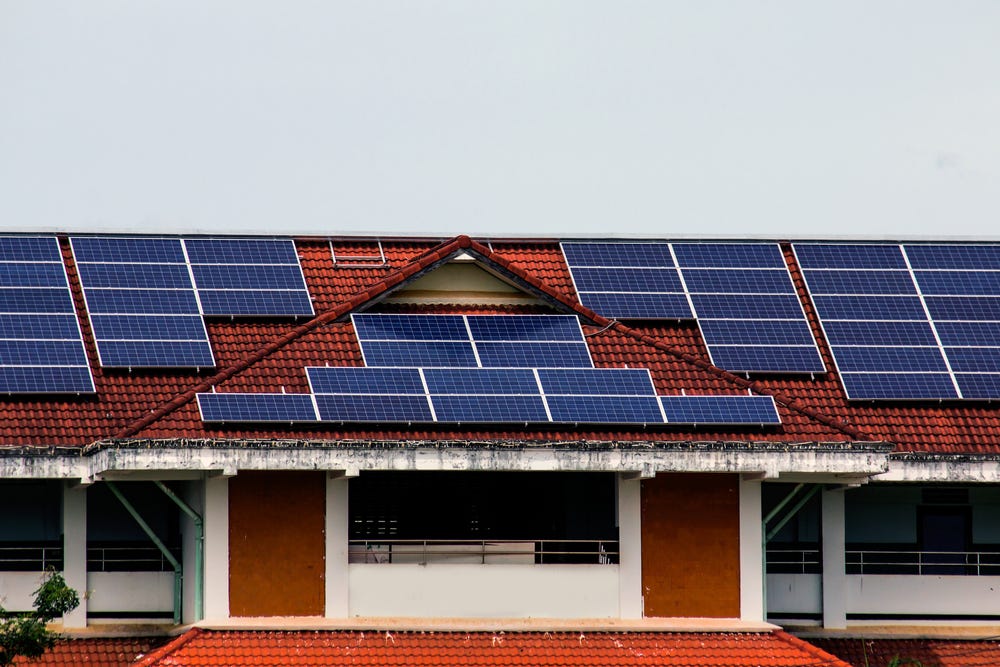
Solar panels on school rooftops. It seems to make perfect sense, doesn’t it? With schools using large amounts of electricity every day, it sounds like a great way to cut down on waste and promote clean energy sources to today’s youth.
Yet, there are state governments that are creating legislation that would negatively affect a school’s ability to go solar. Read on to find out what the fighting’s all about.
Benefits of Solar Rooftops on Schools
Here are some of the ways solar rooftops can benefit schools.
It Saves Money: Going solar takes a large initial investment, but it saves money in the long run. Research has shown that certain schools can save as much as $100 million by combining solar with other energy saving methods. The money saved can be allocated and used to create and improve educational programs.
No Shortage of Space: Schools are large facilities with plenty of options for solar panel space. They can be placed on rooftops, on top of shade canopies in parking lots, on the ground to the side of buildings via pole mounts and in open fields. Photovoltaic installations can be incorporated into the structure of the building or solar shade awnings can be installed over open spaces.
Education: In many parts of the country, solar companies are partnering with schools to educate teachers and students by providing hands on solar kits, solar curriculum and training on solar installations for teachers. This helps them become more aware of solar’s benefits and how it can be integrated into society.
Community: The school sets a strong example for the community. When people see the school using solar, they may be more likely to integrate it into their personal and professional surroundings.
The Florida Situation
Another benefit that schools may take advantage of by going solar is tax incentives and other government related offers. But some states in the country are looking to cut down on incentives which would interfere with schools’ efforts to go solar as well as making green goals harder for residents to achieve.
Florida is one of these states.
Florida is currently reviewing bill SB 104/HB 741 which was filed by Sen. Jennifer Bradley and Rep. Lawrence McClure. The bill greatly reduces Floridians’ ability to go solar by eliminating net metering.
Net metering allows homeowners to return energy they do not use to the grid to offset their own energy use. They are given a one-to-one credit on their energy bill for the amount they return. The utility company controls the energy and can resell it to other customers.
Now utility companies want to cut down the credit they are providing to a fraction of its value. They argue that net metering would lead to a rise in electricity rates, and they encourage people to use batteries for storing energy instead.
Whether their arguments are valid or not may depend on how you look at it. But there is no doubt that a cut to net metering would make rooftop solar unaffordable to many residents as well as facilities like schools. Some claim that utility companies are making this move because they don’t like the idea of people having control over their own power.
The California Situation
A similar situation is taking place in California. The California Public Utilities Commission has its sights set on overthrowing net metering in the state. Here is what their plan involves:
· Reducing net metering payments so residents would be getting back about 5 cents day as compared to the current return of 20 to 30 cents a day.
· Adding a monthly grid charge of $8 per kilowatt for homes with solar installations.
· Adding a temporary market transition credit for residents that want to go solar to lower some of the costs involved. Credit rates would vary depending on income.
· Requiring homes that currently have solar to switch from net metering to net billing within 15 years of installation. Lower income homes could continue using net metering for up to 20 years.
· Creating an $600 million equity fund that would help bring solar installations into low income and heavily polluted neighborhoods.
· Allowing businesses to install solar systems that account for 150% of their energy use to cover things like electric cars and electric heating systems that could be added later.
· Homes with solar would pay higher rates for electricity from the grid during certain times of the day. This is to discourage use during peak hours.
While many environmental advocacy groups are against the Utilities Commission’s proposal, there are some that think it’s a good thing. They see it as a way to bring solar into lower income neighborhoods.
Conclusion
The legislation being considered in Florida and California would make solar unaffordable for many residents and schools, but there may be some silver linings involved. It may help bring solar into neighborhoods that need it most and it could even lower electricity rates. Which side of the coin are you on?

Solar is a great way to power your home. But once you get panels installed, you can’t count on eliminating your utility bill entirely. Or can you?
In most cases, solar will still require you to use electricity for back up. You will also need to pay for gas to heat your home and water if you have a gas system. But according to experts, there things you can do to go completely solar.
This article will explore the possibilities
Consider How Much Energy You Use
The first thing to consider is how much energy you use. For instance, if your family is the type of that leaves electronics on all day, or if you house is huge, you will need a more elaborate set up. You must consider how many panels you’ll require, and they will have to be positioned to collect the optimal amount of sunlight.
Batteries will also be necessary. Batteries will allow you to store solar power so you can access it when it is no longer available via direct sunlight.
Location is also a factor. If you live in an area that has a lot of sunny days, you’re in good shape for going 100% solar. On the other hand, if your region gets little sunlight, this may not be a realistic possibility.
There are many considerations to be made when making the switch. You will need to look at meteorological data to determine how much sunlight you are likely to get in any given month. You should also review your utility bills to figure out how much electricity you use.
The structure and set up of your home will also come into play. Do you have enough space for rooftop or ground based panels? Can the panels be positioned to absorb optimal sunlight? Are there any obstructions involved?
General guidelines suggest that 1 kilowatt of energy per 1000 square feet is enough to keep a house going. But keep in mind that this will have to maintain power in the worst of circumstances.
And while going 100% solar can yield incredible savings, it will require an expensive installation process which may include extensive home remodeling.
Heating a House with Solar Heating
Going 100% solar would require solar power, not only for your electricity needs, but for your gas needs as well. If you have an electric heater, you’re in good shape. But if you don’t, you may consider switching over to a solar heating system.
Solar thermal systems look like the solar cells that convert sunlight into electricity. But instead of using a chemical reaction to create electricity, they absorb the sun’s heat to heat a liquid or the air and transfer that heat into the home.
There are various types of solar heating systems including the following:
Passive Solar Heating: This type of heating uses large windows that let sunlight into the home. The heat and light are absorbed by a storage element that may be in the wall or floor or may be large water barrels stacked along the wall. The storage element radiates the heat into the home and spreads it through the rooms via convection.
Active Solar Heating: Active solar heating uses solar energy collectors that contain air or liquids heated by the sun. Heaters heat the air stored in a solar collector to keep it warm. The heated air is sent to a heat pump or ventilator that warms the home.
A liquid solar heater is connected to a pump that circulates heated liquid from the solar connector through the home’s pipes.
Liquid Active Solar: A liquid active solar heating system requires a radiant slab system, or panels of tubes or pipes, to be installed in the walls or floors of your home. The liquid in the system is heated and pumped through the home via the tubes and pipes to radiate warmth. You may also need a water storage tank to be installed to retain the hot water and transfer its heat to a heat pump.
Hot water radiators, baseboards and central air furnaces can use the hot water to disperse heat through the rooms of the home. The hot liquid can also be sent to a storage tank to heat the home’s water.
Combination Solar and Geothermal: Water heated in solar collector can also be warmed by a geothermal system that requires pipes to be buried In the ground near your home. The pipes connect to the pipes of the heat pump to transfer water heated by the ground to the pump which disperses the heat throughout the home. This type of system is recommended for cold climates as well as areas that don’t get a lot of sunlight.
Conclusion
Going 100% solar is an expensive proposition. But it can pay off resulting in possibly zero utility bills not to mention how you’ll be helping the environment. Will you be trying to achieve this task in the future?
